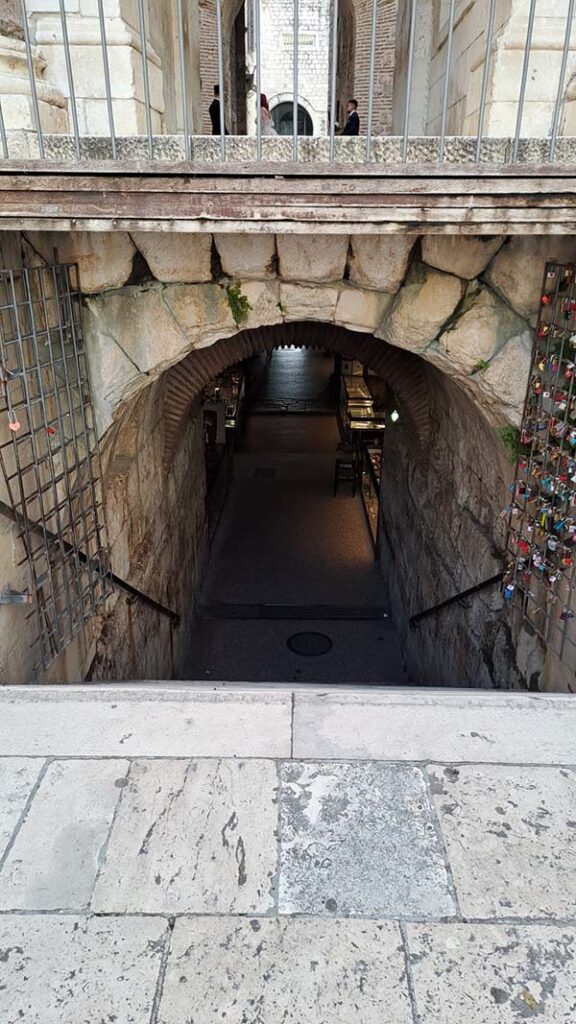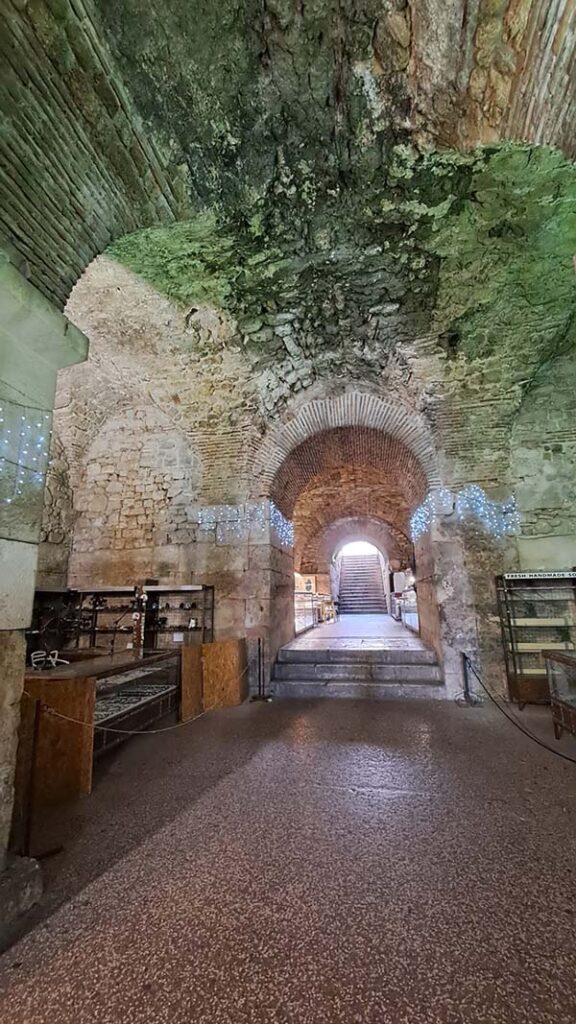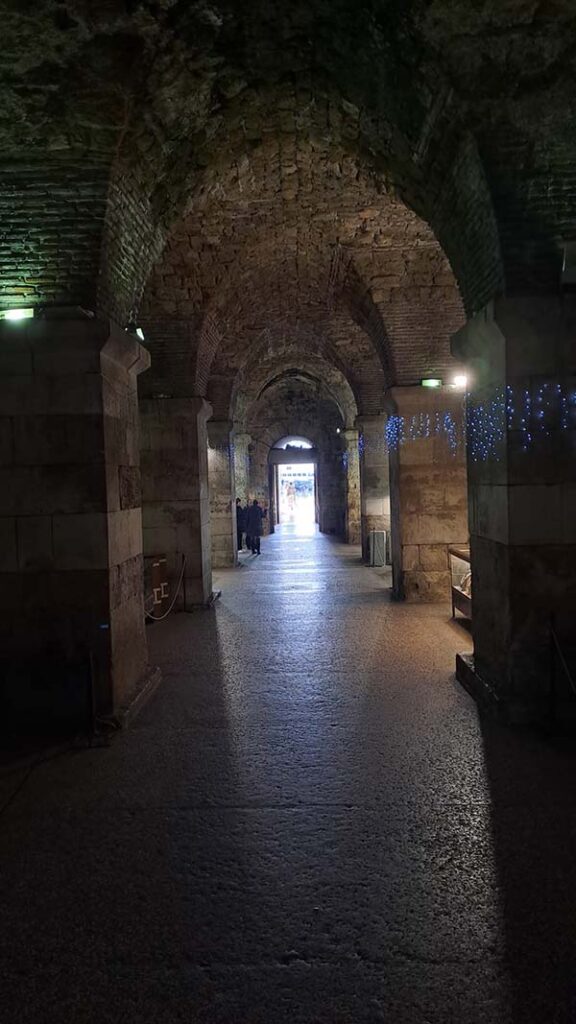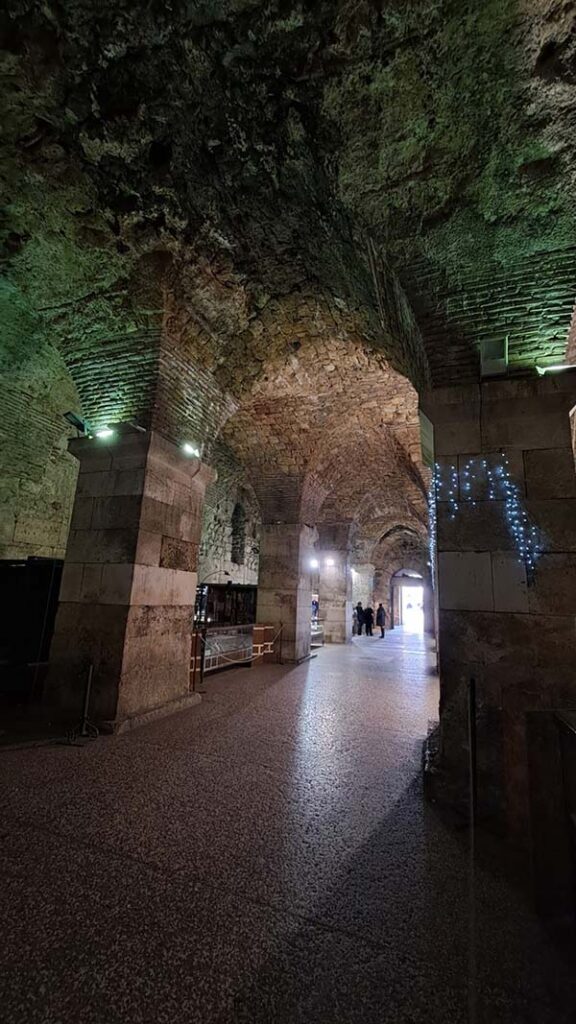Probably the most impressive part of the whole palace, the basements constitute one of the best-preserved segments of the entire emperor’s complex. Sometimes also referred to as the cellars, the different names for the vast rooms supporting the southern part of the palace can be somewhat misleading. What we designate as the basements are actually substructures designed to elevate the Emperor’s apartment above sea level, create a passage to the sea, and provide rooms for storage.

Like in many other parts of the palace, the actual function of many of its rooms still remains a mystery to us today. Throughout the centuries, the basements served various purposes. It is believed that the many rooms of the basements provided shelter for the earliest residents of Split during the turbulent events of the 7th century. In later periods, the rooms served as cellars or workshops for houses on the upper levels, as documented by findings such as an olive oil press in the western quadrant of the basements. The rooms of the basements were also often used by Split’s merchants as storage space for their cargo. However, the main use of the basements was usually a much simpler one. For centuries, the people who lived in the houses above drained their waste and dumped their trash into the lower chambers.
This resulted in the basements becoming almost completely buried, creating an incredible coincidence. By filling out the basements, the people unintentionally preserved them, as the soil stopped the decay of the infrastructure and provided additional stability to the houses above. Because of this, the basements have remained one of the best-preserved parts of the palace, even though some parts are not yet excavated.

The entire complex consisted of more than 50 rooms. We know today that the layout of the basements almost exactly mirrored the rooms of the emperor’s apartment above. This allowed historians to understand the use of many of the palace rooms. We know today that the dining area and the baths of the emperor’s apartment were in the eastern part, while his personal bedrooms and chambers and his grand reception room were in the western part.
The first organized excavations of the basement rooms began around the mid-19th century by opening the passage from Peristil to the waterfront. In those and all subsequent excavations, archaeologists found a wealth of historical artifacts from all periods of Split’s history . From smashed-up artifacts and decorations of the palace to utensils, plates, and furniture from the medieval period.

Today, the majority of the rooms of the basements are available for visit. The central part is an open passage with shops where local artists sell their souvenirs and artworks. The western and eastern rooms are part of the Museum of Split and require an entrance ticket. A visit to the basements is a must during your stay in Split. They are today one of the best-preserved examples of Roman substructural architecture. Roman engineering and ingenuity is see in the basements on full display. Also, the basements are a must-visit for all fans of the TV show Game of Thrones. In 2014 and 2015, the basement rooms became massive a film set. The famous scenes when Daenerys chains her dragons in a crypt-like dungeon were filmed in the largest room of the basements in its western part.

